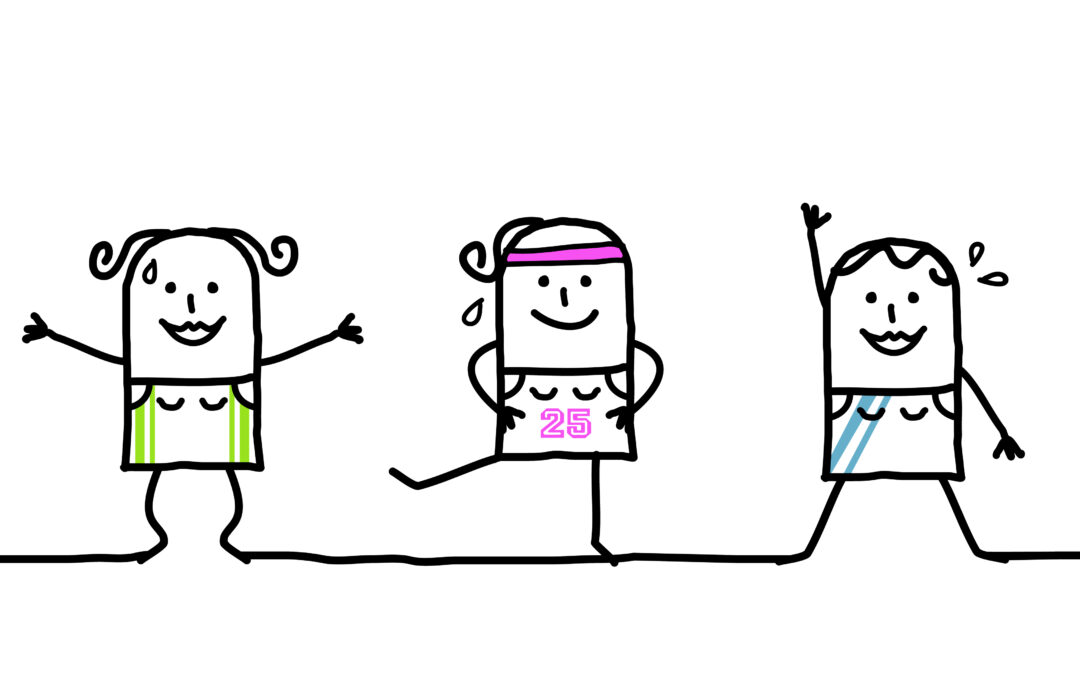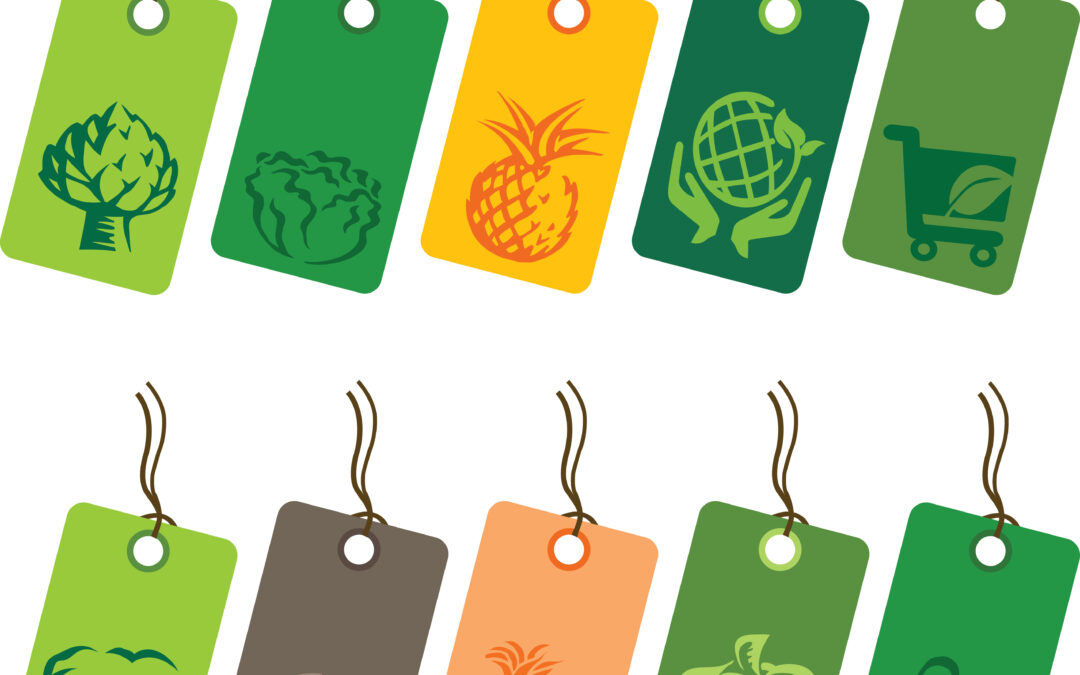
by Deirdre | Sep 14, 2012 | Mindful living
Client Insights is an occasional series of articles on breakthroughs that clients have experienced during coaching sessions. Client details changed to protect those released to fly.
One special client I worked with was Susan. She embodied the spirit of beauty in all aspects in her life. She found unending joy in creating beauty in her home, with her clothes and accessories, and in life in general. What she saw in beauty and creativity was excitement, and bringing them to life gave her that thrill. Her local art store was the first place she headed to when she felt disconnected from her creative source.
Susan wanted to see if coaching could help her improve her physical condition so she could continue taking on creative projects. She had been diagnosed with a disabling condition that was expected to worsen over time. She wanted to explore the options she had to continue her deep connection to creativity. When we first started working together, she had put her creative projects on hold to focus on her health.
She felt she was handling her health well – doing all the things she could to take care of herself and surround herself with caring specialists and talented alternative therapists. I asked her to check out her hormone levels with her doctor. As we hit peri-menopause, our sex hormone levels start bouncing around from day to day and underlying stress hormone issues can pop up. Some of the symptoms we attribute to other conditions can potentially be the symptoms of stress.
Understanding Your Strengths
It was easy to see that Susan could count on her strengths of creativity, kindness, excitement about constantly evolving and expressing herself through art. Her heroes were women in the popular media who made a success for themselves by being true to their creative, nurturing spirit. They were the ones we all love – who’ve lived their lives along with us.
Her immediate circle – family and daily contacts – were much more conservative and “left-brained” thinking. As much as they loved her, they didn’t know how to react to her “flightiness” – her multiplicities. As much as she loved them, Susan felt a bit like a fish out of water with them. Even though she didn’t really think of herself in these terms, she was the sole artist in her world. They did not get her talents.
And when she looked at the world through their eyes, she did not get her talents, either.
I asked her: “Have you ever done anything to savour your accomplishments?” She found them hard to see as accomplishments even though they were of staggering brilliance (her talents shone in design and she could make just about anything). For her it was moving from one challenge to another, without making a big deal out of it.
When she stopped to savour her talents and really look at how she was using her strengths all the time, she was excited by the amount of creativity that already existed in her life.
Susan’s big shift was realizing that she didn’t have to work towards what she wanted. She already had everything she needed. When she realized this, she got a sense that time opened up for her. Time wasn’t something she had to fight to preserve anymore. She was free to savour the time she had now.
When she re-ignited her creative vision, she grew even more in patience and kindness to help teach the people around her what she needed and how they could support her vision.
The shift that Susan made in her own thinking created space for her to disengage with the fear of change in those around her. The symptoms of her condition improved, opening up more possibility for new creative projects. She looked great and said she felt great.
Now my question to you . . .
Do you savour your life? Do you look at your talents and uniqueness with a kind and loving eye?
Posted by Deirdre Walsh
Image: iStockphoto
If you enjoyed this post, please share it with your friends!

by Deirdre | Sep 7, 2012 | Mindful living
I honestly think it’s a bit tragic that we live in a world where fun is seen as frivolous, or some kind of goal-oriented project, or the last thing we have on our list. We get bogged down by the needs of others and all those darn responsibilities. Is it possible that we took the lessons from our parents too much to heart? Of do we just wake up one day and realize that the love and attention that we want to give to everyone around us has become a bit of a trap?
Old Broads and Bikinis
I’ve always really admired the older broads who would spend their summers in their bikinis, gardening and puttering around the house, throwing on a caftan to go to the store. They just didn’t care about that “rule” that no one over 35 should ever wear a bikini. We had a neighbour whose summer look (until she was well into her 80s) was bikini and gardening clogs, cigarette in one hand and scotch in the other. While I don’t espouse her health habits – she must have genetic bulletproofing – I always was inspired by the joy for living that emanated from her.
There is a renewing power to joy.
I wonder if having fun – purposeless, pointless fun – is the new middle-aged bikini-wearing. It seems a bit self-indulgent, doing things only because they make you happy. You may find that others think that you’re not really trying sometimes. But you know what I learned from my neighbour? Stop giving a crap about what people think and start having more fun.
Try an exercise this week for fun:
- Pinpoint something you do every week that’s really important to you. Something that you don’t want to do half-assed. It may be the meals you make for your kids, the quality of a report you hand in at work, organizing an event for friends, something like that.
- Think about how you could lower your standards a bit. Not a lot – maybe just 25% less perfect. 25% more lackadaisical (best definition I found for this was “carelessly lazy” – love it).
- Figure out how much time you save on that task by being a little bit lackadaisical – 5 minutes? 20 minutes?
- Think of something fun you can do with that time. I looked online to find fun things you can do in 5 minutes and came up with mostly tedious lists of things like empty the dishwasher, floss your teeth, etc. I hope I don’t have to point out to you that those things are not fun.
Remember
- Fun is something that takes up your whole attention, relaxes your body and has no purpose beyond giving you pleasure.
- Fun is not maintenance, and fun does not set goals.
- Once you start thinking about it you will remember quick things you like doing. The best ideas I could find were at CBS.
Handstands anyone? Let me know in the comments what you did for fun!
Posted by Deirdre Walsh

by Deirdre | Aug 30, 2012 | Inspired Living, Mindful living
Client Insights is an occasional series of articles on breakthroughs that clients have experienced during coaching sessions. Client details changed to protect those released to fly.
Before we get to the rest of the post, I wanted to remind everyone that today is an official “blue moon”. What it means is that August has two full moons this month – one on August 2nd and one on August 31st. It’s not really anything more a scheduling blip between the calendar and the moon. But it does remind us to go and do something we only do “once in a blue moon”. I gently suggest that you make that something fun.
Penny and I were coming towards the end of our sessions and I was feeling like we had just started getting close to the heart of things. I was constantly amazed at the tales of accomplishment she would bring to our sessions, but concerned because she didn’t see them as accomplishments herself. She couldn’t bask in the glory of her talent and awesomeness.
I really enjoyed coaching Penny – she has a lovely, ironic sense of humor and always showed up to coaching raring to go. She’d been working at the same place for over a decade before making a change to a new company, right around a milestone birthday. She was worried about falling into the same patterns at work – of being the underappreciated office go-to who got left holding a lot of bags. She was starting to feel that her personal time was more important and she wanted to have more control to focus on life outside of work.
We circled through a number of calls as Penny was establishing who she was going to be at her new job. She was determined to make things be different this time, but was often unsure as to how to do that. She found herself falling into old patterns, even in the new environment. We talked about the things that gave meaning to her life – spending time with friends, having downtime at home and, most importantly, getting back to a writing career that she’d put aside to make it in the “real world”.
The place where core values and actions fail to meet is a juicy place to spend time in coaching. I wanted Penny to get really clear for herself: “What is it about writing that is most meaningful for you?” She felt writing let her express herself in way that was never open to her before. She had absorbed the lessons of early life to be hard-working and always do a good job at your paid job. The first big aha she had was when she made the important distinction between time spent and time invested. She realized that spending time writing was an investment in her and not a silly hobby spent to pass the time.
Her insights started coming fast and furious from there.
On the next call she mentioned speaking to a co-worker late on a Friday afternoon. He was bemoaning the fact that the week had run late, and he had so much work for next week, and his weekend was booked with family events, and he had so much to look after at his house, and . . . . . Penny laughed as she called him a “sad-sack”, moaning about the state of his life when he was steeped in abundance. The abundance of a good job, of a healthy family, of a loving home. She marvelled at how he couldn’t see the riches that were right in front of him.
And then she said something that made me cheer inside. “You know, Deirdre, I saw too much of myself in him. Seeing life for the burden that it is and not for the gift. And now I see how my previous co-workers saw me. No wonder they avoided me.” She chuckled for a moment – good sign, I thought. And then she said something that really made me cheer. “I want more for myself from now on.”
Her first act was to put aside the perfectionism she’d been controlling herself with for years. She decided that her best efforts were going to be enough for her job. What is truly remarkable about this insight is that she broke through something that keeps so many of us stuck in life.
She decided she was enough.
After that huge insight, many of the qualities of that Penny wanted in her life fell into place – a bit like dominos. She felt a lot more efficient, and much less anxious, at work. She knew what she was capable of doing and decided to do her best to not worry about the rest. She decided to change up her exercise routine to suit her mood. She wanted to capture the great days to walk outside with her husband during the summer. She felt that coaching had freed her up to take less responsibility for everyone else’s experience and more for her own.
And she started writing regularly.
So I ask you . . .
Where do you downplay your achievements?
Are there core values in your life that you’re not taking daily or weekly action to express in your life?
What is one small action you can take to plant a seed of creative self-expression?
Posted by Deirdre Walsh
Image: iStockphoto
If you enjoyed this post, please share it with your friends!

by Deirdre | Jun 29, 2012 | Mindful living
Be warned: this is a post with the kind of scientific minutiae I love to pass along, like as if I was a scientific evangelist. I can hear my parents saying “Why couldn’t you have been this interested in science when you were, say perhaps, actually doing a science degree.” All things in their time, I say.
I read some of the clearest, head-smacking arguments for exercise in a book called Spark: The Revolutionary New Science of Exercise and the Brain by John Ratey. The sound bite is . . . regular aerobic activity raises your personal stress set-point. You know you’ve hit that set-point when you’re gnashing your teeth or maybe your mind bolts off to the negative. Now, this won’t be of interest to people who don’t feel overwhelmed by stress in their lives. Oh wait . . . . NO ONE is dealing with less stress these days.
Change Your Stress Set-Point
Working with your stress response can make you stronger, claims Dr. Ratey. In well-managed doses, stress seems to cause brain cells to overcompensate and organize themselves against future demands – stress inoculation. Assuming that the stress is not too severe and that neurons are given time to recover, the connections become stronger and our mental machinery works better.
Why bother messing with your set-point? Because a higher set-point means that you are more in control of your reactions. And your set-point seems to drop on its own as we get older. I really relate to Pema Chodron, a Buddhist nun, when she said she started working with her reactions to life’s stressors because she didn’t want to become that cranky old person who reacts badly to everything.
Save Your Cells!
We’ve heard about the damaging long term effects of stress, mostly chronic disease and disability. But stress adds up on a daily basis at the cellular level. There are three main types of cell stress: oxidative, metabolic and excitotoxic. All three of them cause damage to cell functioning and lead to cell death, which leads to disease – not so good. The first type of stress is caused by the destructive by-products of normal energy production (oxidative stress). We know these as free radicals and we can help our body neutralize them by eating lots of fresh veggies – also called “getting our antioxidants”. The other types of stress are caused by the cell’s inability to convert glucose to energy (metabolic stress) or by demanding cells to keep working without providing enough energy (exitotoxic stress).
But mother nature is a clever woman, and she’s given us some powerful repair molecules – better known as growth factors – to protect our cells. Stimulating them is your best chance to keep your set-point high and you disease free. They have pesky, hard to remember names – brain-derived neurotrophic factor (BDNF), insulin-like growth factor (IGF-1), fibroblast growth factor (FGF-2), and vascular endothelial growth factor (VEGF). And now we’re at the big reveal . . . consistent aerobic exercise ramps up production of these growth factors more than any other stimuli.
So, as your mother (nature) would say, get up and go outside. While you’re walking, think of your faithful cells and how happy they are that you’re sending in the cavalry to help them keep you healthy.

by Deirdre | Jun 20, 2012 | Mindful living
In the middle of my integrative health training I had one of my biggest aha moments about stress. One way that your body tells you that you are living with too much stress is by making you more sensitive to foods you love.
I lived blissfully unaware of food sensitivities until that magic midlife moment when coffee and wine, my dear companions, started disagreeing with me. Now they are a reliable guide for excess irritation in my life. When I start to break out from drinking coffee I know it’s time to get more rest and do a bit of life de-cluttering. I get my fastest result by eliminating irritating foods and loading up on organics.
What is Organic, Exactly?
Coming from a background in marketing, the term organic used to make me think “easy way to extract more cash”. I had to educate myself on what organic really means. In Canada, food that has been labelled “organic” has been grown or raised without chemical fertilizers, pesticides, weed killers, or drugs. So farmers or ranchers use natural methods of pest control, like plant oils, soap, fungus-eating bacteria, or bugs that eat other bugs. Fertilizers must be natural and irradiation to kill pests, improve yield or prevent spoiling is a no-no. Ranchers don’t give their animals antibiotics or growth hormones and feed them only organic meal.
Don’t confuse organic with food labelled “natural,” “sustainable,” “hormone-free,” or “free-range”. The Canadian government does not regulate the use of those labels, so anyone can use them.
Shop Mindfully
The only problem with buying organic is the strangled gasp I emit at the check-out if I’ve been shopping mindlessly. I decided to check out different ways to eat as much organic, sustainable food as possible without threatening my own personal sustainability. Here’s a list of obvious and not-so-obvious tips:
1. Buy organic versions of only the foods you eat most often – on the principle that your habits are what make you
2. Buy organic varieties of the most pesticide laden traditionally grown produce. Hit list – peaches, apples, sweet bell peppers, celery, nectarines, strawberries, cherries, lettuce, imported grapes and pears.
3. Watch for in-season sales of fruits and veggies and stock up. Clean, prep, blanch and freeze them – broccoli, green beans, peppers, cabbage, cauliflower and mushrooms all do well.
4. Be creative with protein sources. Lentils, beans, eggs and tofu can all substitute for meat at a much lower cost per 100 grams.
5. Use canned fish instead of fillets. All tinned salmon is wild-caught and chunk light tuna is healthy in moderation. The World’s Healthiest Foodshas a concise post on which types of tuna you can still eat and not risk mercury toxicity.
6. Sign up for organic food baskets from small independent farms. You buy a share in a local organic farm and get delivery of local and sourced fruits, veggies, and other organic-certified goodies. Some producers set up a network of delivery spots in urban areas. You can find lots of great seasonal recipes on most sites – check out PlanB Organics as an example.
7. Find a local organic buying club. Ontario Natural Food Co-op (ONFC) will deliver natural and organic brands like Amy’s Kitchen and Eden Foods to self-organized buying clubs. The minimum is 5 adults, but a group works better with at least 10 families. ONFC can give you a list of buying clubs in your area to join.
8. Buy generic or house brand cereals, olive oils, frozen fruits and vegetables from your local organic food store. They are usually equal in quality to the national brands.
9. Buy healthy staples like dried beans, sunflower seed, brown rice and millet in bulk.
10. Grow a sprout or greens garden in a sunny spot for nutritious greens on demand.
Sources: HealthLink BC, Environmental Working Group, Best Health Magazine
Posted by Deirdre Walsh
Image licensed under iStockphoto
If you enjoyed this post, please share it with your friends!




